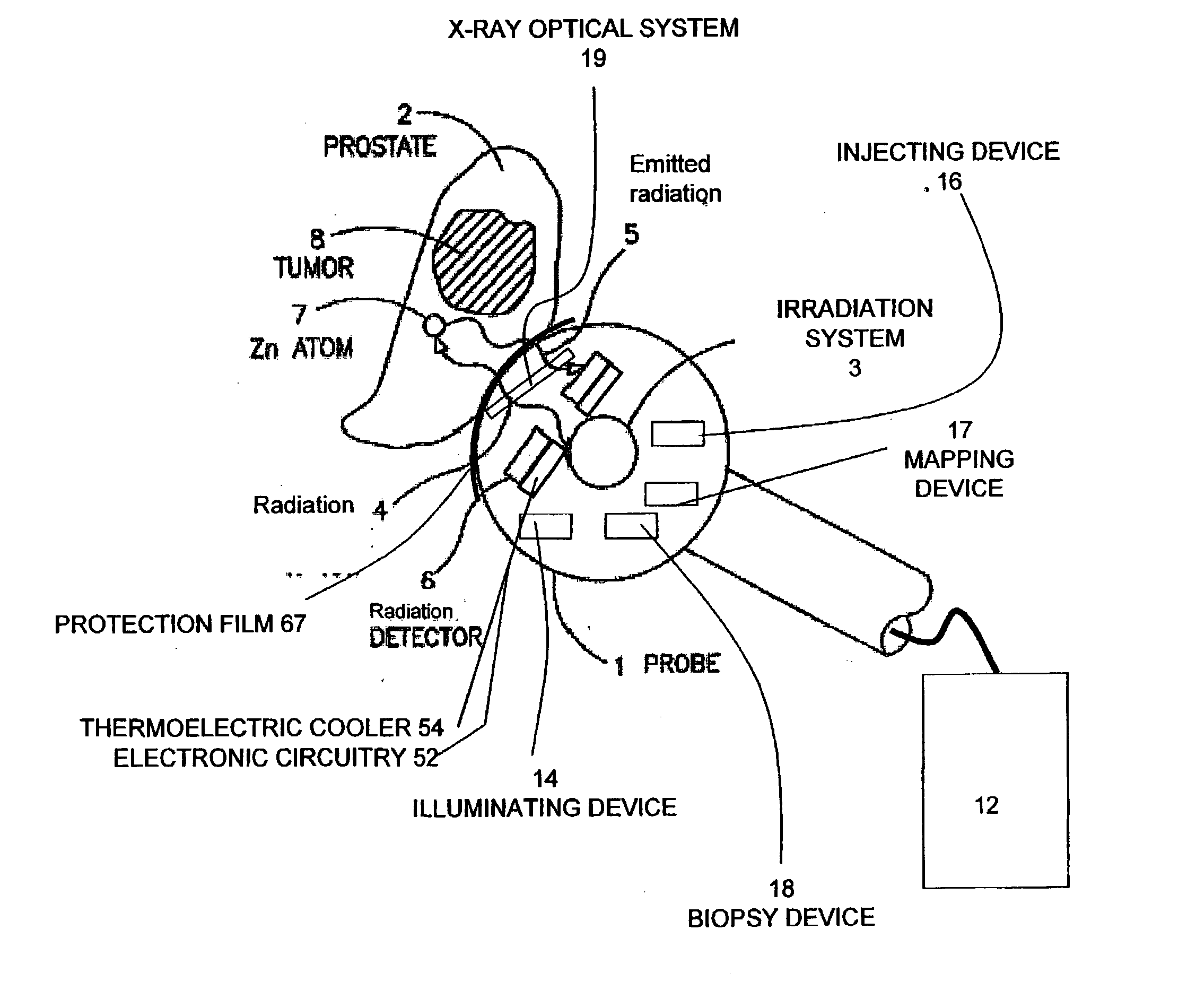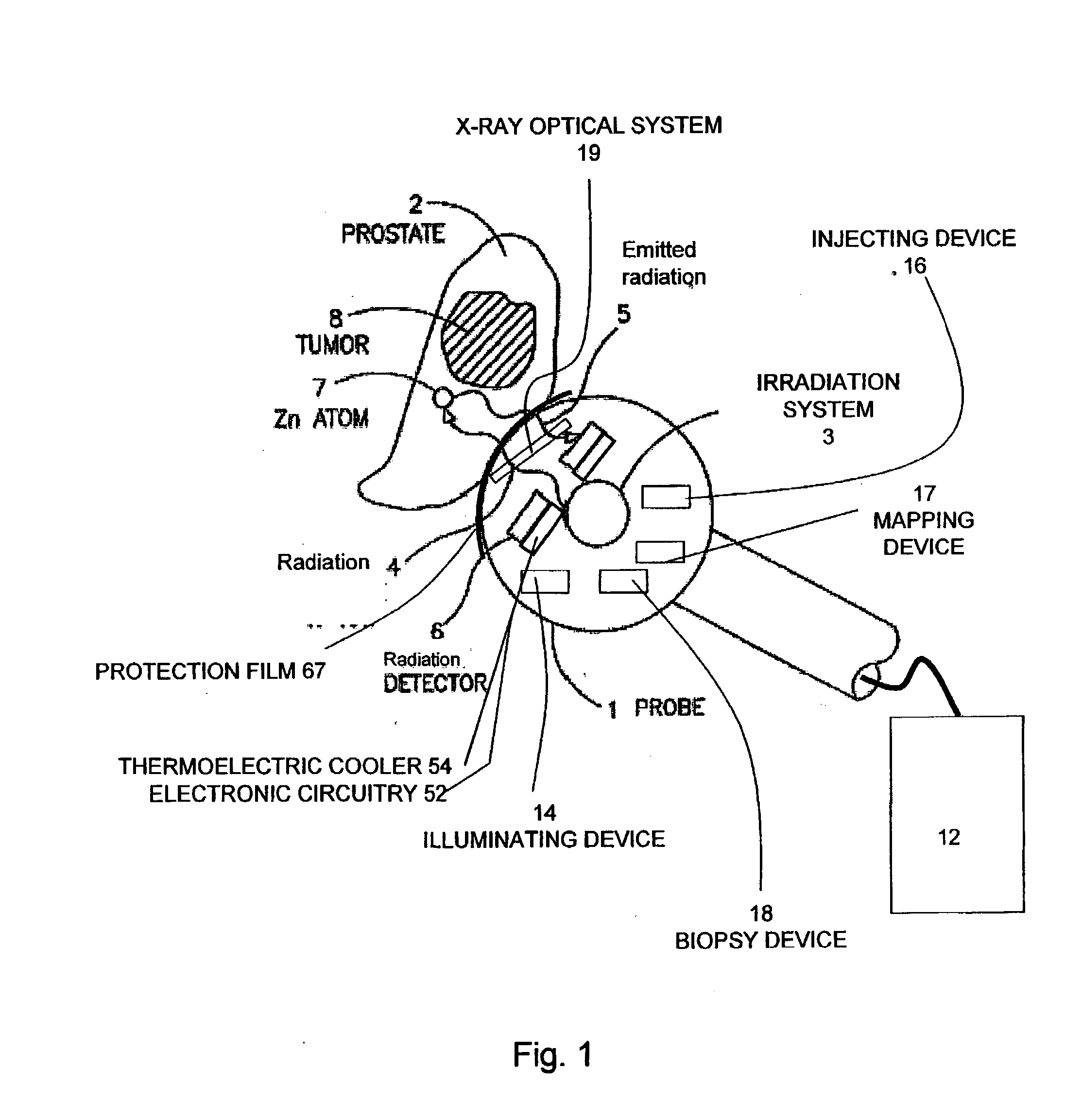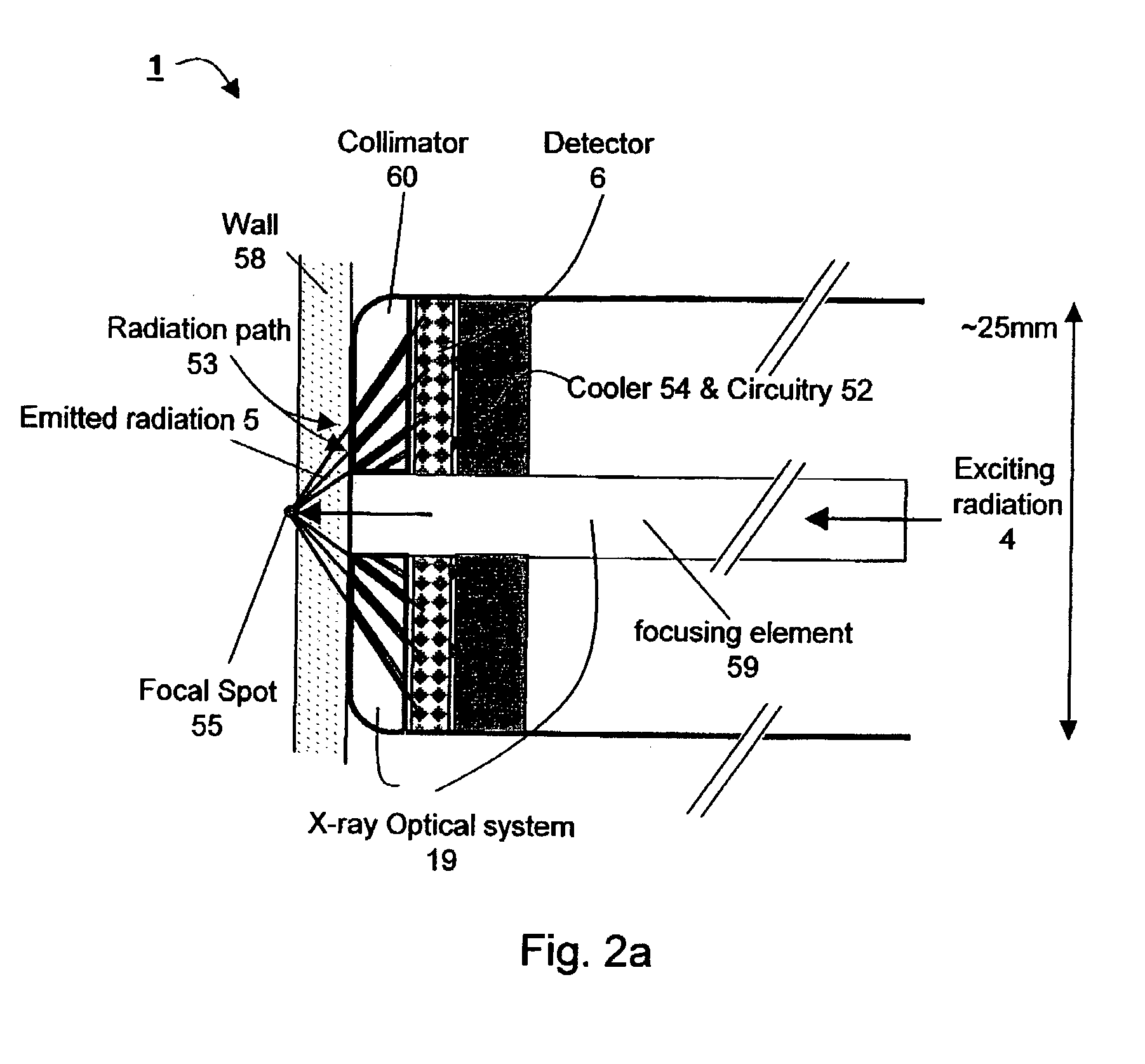System and method for cancer detection
a cancer detection and system technology, applied in the field of system and method for cancer detection, can solve the problems of inefficient biopsy procedure, insufficient information about the stage of the disease, and insufficient existing methods
- Summary
- Abstract
- Description
- Claims
- Application Information
AI Technical Summary
Problems solved by technology
Method used
Image
Examples
example 1
In Vitro Measurements of X-Ray Spectrum of Prostate Phantom
[0201] The determination of the optimal energy of the incident radiation and a feasibility of the in vivo Zn determination according to the invention was demonstrated in the laboratory using a prostate phantom in the form of a polyethylene vial filled with aqueous Zn solution.
[0202] The experimental arrangement is shown in FIG. 5. The irradiation system was a filtered X-ray beam 20 from a tungsten anode X-ray tube 22. The tube 22 was operated at 36 kV and the filter 24 was a combination of Cu / Mo foils. The diameter of the beam on the sample 26 was about 10 mm. A ferrous collimator 28 was included in the beam's path. The irradiated samples consisted of 30 cc polyethylene vials, 34 mm in diameter and 1 mm thick wall, containing aqueous solutions of Zn. The Zn characteristic X-rays were emitted from the sample and detected by Si(Li) detector 30 (5 mm.sup.2 in area) cooled by a liquid nitrogen (LN.sub.2) arrangement 32.
[0203] FI...
example 2
XRF and PSA Measurements in Fresh Prostate Tissues
[0206] The purpose of the present Example is to examine the possibility of using prostate Zn concentration as a base for an in-vivo diagnostic procedure. An XRF facility optimized for Zn measurement in fresh prostate tissues was constructed. For the purpose of exploring the diagnostic potential of using Zn levels determined either from biopsies or non-invasive in-vivo methods in combination with other indicator, such as PSA, the fresh prostate tissues were subjected to histological examination as well as to the XRF facility.
[0207] Prostate samples from a total of 28 patients were analyzed in this study. Clinical records included age, serum PSA, previous medical therapy, surgical procedure and histology. Prostate tissue samples were obtained from patients undergoing surgical procedures: suprapubic prostatectomy (SPP) in 21 patients for BPH; radical prostatectomy (RRP) in 6 patients for prostate cancer (CAP) and radical cystoprostatect...
example 3
In-Depth Topographic Zn Determination of Prostate Phantom
[0236] The in vivo measurement of Zn in the prostate through the rectum, according to preferred embodiments of the present invention, involves a non-trivial assessment of Zn concentration within the prostate while traversing a few millimeter thick rectal wall that also contains Zn, but at lower levels. The concentration of Zn in non-prostatic tissue surrounding the prostate is known to be about 12 times smaller than that in the dorsal lobe of a non-malignant prostate. The attenuation coefficient for 8.6 keV in tissue (8.3 cm.sup.-1 and absorption length of 1.2 mm) results in a significant attenuation of the exiting fluorescence radiation through a 3 mm thick rectal wall. It is estimated that the rectal wall attenuates the radiation by a factor of 12. At such high attenuation the contribution of Zn from tissues other than prostate, such as the rectal wall, can become significant and mask the signal from the prostate Zn.
[0237] O...
PUM
 Login to View More
Login to View More Abstract
Description
Claims
Application Information
 Login to View More
Login to View More - R&D
- Intellectual Property
- Life Sciences
- Materials
- Tech Scout
- Unparalleled Data Quality
- Higher Quality Content
- 60% Fewer Hallucinations
Browse by: Latest US Patents, China's latest patents, Technical Efficacy Thesaurus, Application Domain, Technology Topic, Popular Technical Reports.
© 2025 PatSnap. All rights reserved.Legal|Privacy policy|Modern Slavery Act Transparency Statement|Sitemap|About US| Contact US: help@patsnap.com



